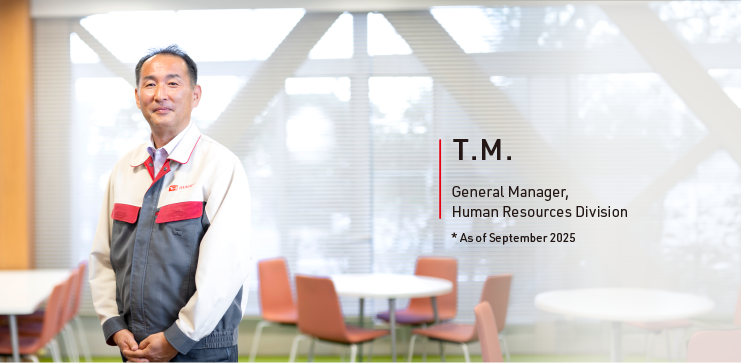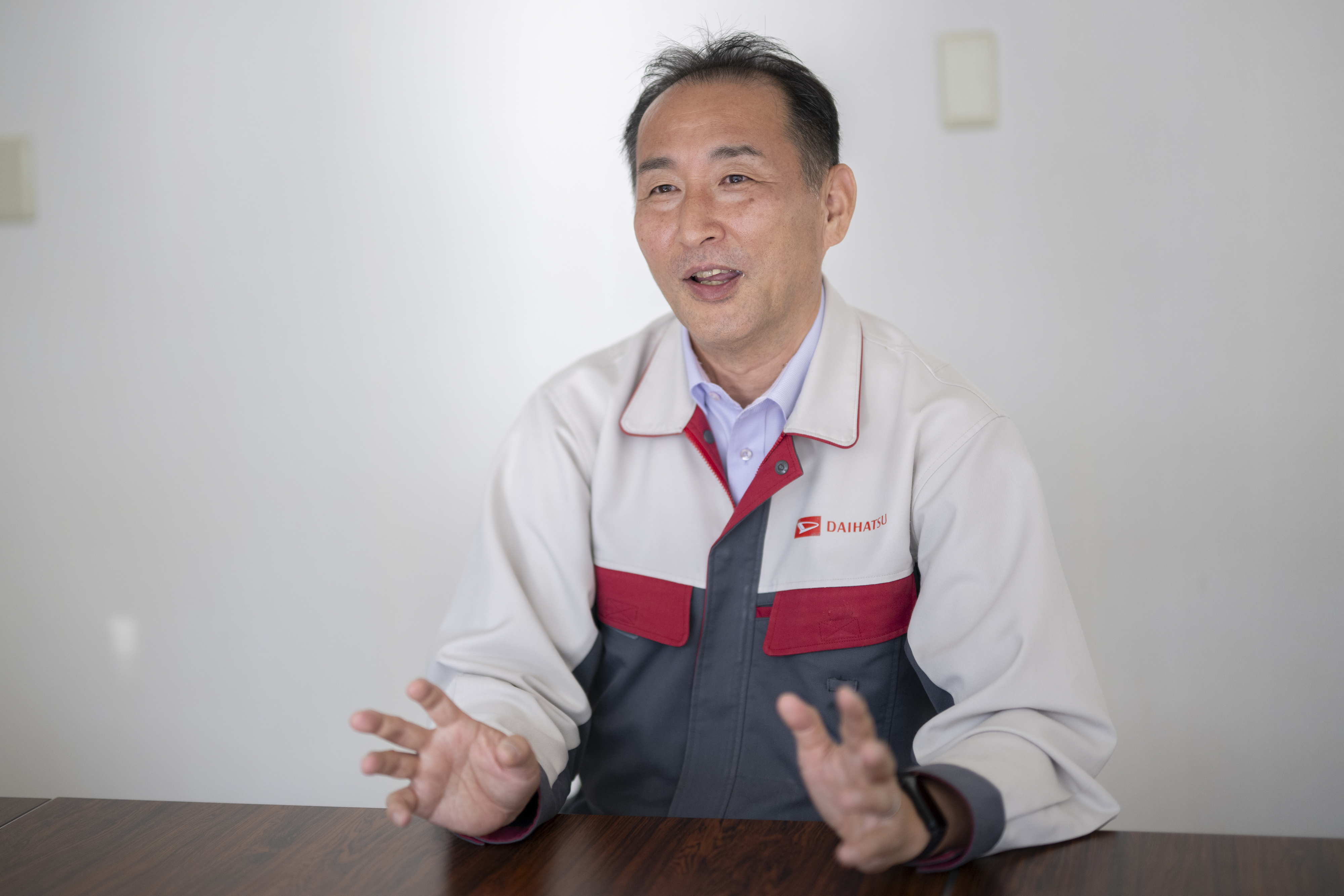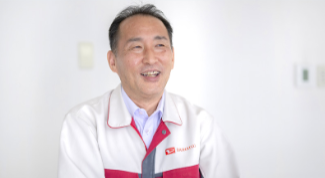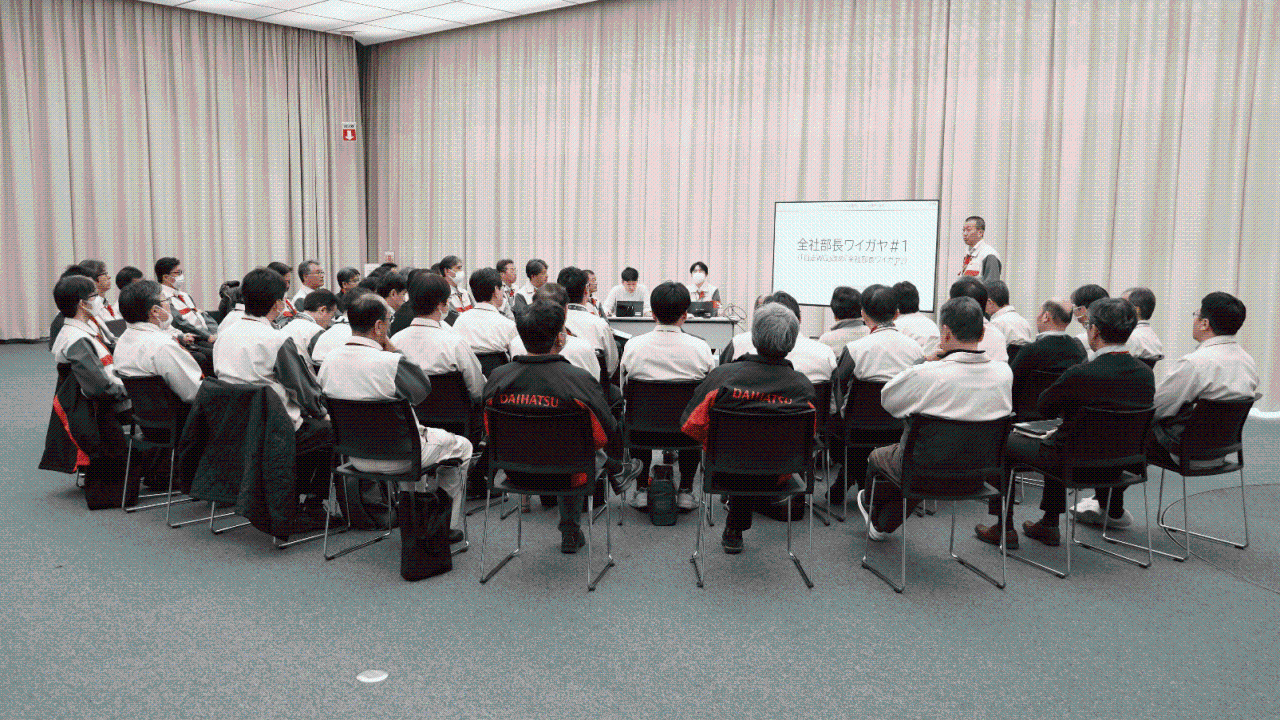Reinforcing Our Business Foundations

Building Workplaces Where People Are Happy to Work
—Cultural Reform via Three-pillar Unified Strategy
Systems and Rules Infrastructure Themselves Are Not Enough
I returned to the Human Resources Division in January 2023, this time as the General Manager. Since joining the company in the R&D Administration Division, I have gone on to work in a variety of positions including as a full-time union official as well as in recruiting, management planning, and secretarial positions. The certification test fraud scandal broke immediately after I assumed the position of General Manager of the Human Resources Division, so I was responsible for making sure it could not reoccur. The painful lesson of that experience was that simply creating systems and rules infrastructure is not sufficient to cultivate and develop a cycle of growth for human resources. If the intent behind them is not communicated and embraced, it doesn’t matter how wonderful our systems and rules are. We are currently working to fully review our systems with the goal of changing behavior via the systems themselves.
Ten-year-old HR Systems Are Out of Touch

Daihatsu did make major changes to our HR systems once in 2013. This included merging personnel classifications, streamlining job function ranks, and other systems relevant to that era, but after a decade, there are many aspects that are dated and out of touch. For example, we may need flexible compensation for personnel in highly specialized areas, and a system that helps people undertake new challenges. The reality is that our current systems have not kept up with the changing times. Line employees also face limited opportunities for promotion due to the broadening of job ranks. That is why we are now revising these systems from the bottom up.
Consistency Is Key Throughout the Process: Hiring, Development & Training, Evaluations, and Compensation
The role of HR is to create an interconnected personnel development cycle. Ideally, everything from hiring to development and training, placement, evaluation, and compensation should connect in one cyclical process. Changing the evaluation system, strengthening training, or making other partial improvements will not lead to fundamental change. Unless all of these parts are interlinked, individual personnel may be left unsatisfied and training will not always produce real results. We currently have several measures underway to address this, including adding “personal qualities*” to the promotion criteria alongside traditional personnel evaluation standards, and reducing the number of organizational ranks through organizational reforms. I have also launched a program within the division called “Chat with the General Managers,” one-on-one discussion sessions between myself and individual personnel that give me more opportunities to pick up real feedback from the front lines. Although these changes are still a work in progress, I have been able to feel the beginning of changes in our organization atmosphere.
* The ability to work hard for others, including customers and peers, and the ability to learn from others with humility while continuing to change oneself.
Cultural Change Through Philosophy × Systems × Communication

Although we often say that “cultural reform is needed,” I do not believe anything will actually change by simply talking about it again and again. Culture is not something that can be suddenly changed by adjusting some set policies and rules. Instead, it arises from the various short verbal exchanges made in the course of daily work, everyday language use, and everyday behaviors that gradually spread through the entire organization and ultimately become the company culture.
My priority is to design mechanisms that “change behaviors.” Encouraging behaviors requires systemic changes—almost like an inoculation that prompts change. We need to establish a set of rules and frameworks for the organization that can act as a compelling force that pushes things forward. At the same time, knowledge and skills are needed to take action, and education must be our weapon of choice. In order to have a coherent organization, all of these things need to be in place, and all employees need to be speaking the same common language, with all communication based on an embrace of the corporate philosophy. Only by using the same words to mean the same things can we clearly indicate what we are aiming for.
Something did leave a strong impression on me when I sat in on a certain company’s training session. The participants had a very natural way of saying “Let’s do X now” and “I’ll do X myself,” and that was not something they were forced to say but rather something rooted in the company culture. As I watched that, I realized this attitude was just baked into their behaviors.
We need to apply that sort of common language and
code of behavior to our own workplaces at Daihatsu. Rather than simply posting a corporate philosophy, we need to think about how frontline personnel use that philosophy and how they feel about it. I believe that designing a three-pillar unified strategy of systems, training, and philosophy will lead to real cultural reform.
We are only partway there now, so we are focusing on this point in particular.
Boosting Company Appeal
My ultimate target is for Daihatsu to be a company where people are happy to work. Being a people-friendly company does not mean spoiling personnel. Rather, it means cultivating them and protecting them. Only by becoming that sort of company will our people and organization develop and improve. Moving forward, the Japanese workforce will steadily shrink. That is another reason why we need to be a good company that job seekers will be happy to choose. To that end, we need people and the company to grow, so that compensation can grow as well—we need to create a positive cycle like this. My current mission is to ensure that the system reforms and personnel training initiatives underway right now serve as a solid foundation for that growth cycle.
COLUMN ー Company-wide General Manager Waigaya Meetings
Cross-division Discussions Starting to Shift Management Challenges
As part of Daihatsu’s initiatives to reinforce our business foundations, we hold monthly Company-wide General Manager Waigaya Meetings in which all of the company’s division/department General Managers participate. General Managers connect management with the frontlines, and this “Waigaya” initiative was started to give them an environment in which they can freely exchange opinions about the challenges facing management and their own divisions. New, futureoriented ideas and challenges are generated by drawing on divisions’ respective strengths for deep discussions from the perspective of what is optimal for the company as a whole.
This year, we held workshops aimed at promoting the corporate philosophy and sharing the competitive strength cultivated by Daihatsu’s business structure and divisions.
General Managers who previously had little interaction at work are able to meet directly, share time together, and speak frankly, which has resulted in words of advice, cooperation, and co-creation across divisions.
Company-wide General Manager Waigaya Meetings continue to serve as a venue for discussions about communicating and resolving management challenges from a frontlines perspective, forging a path for Daihatsu’s future.
